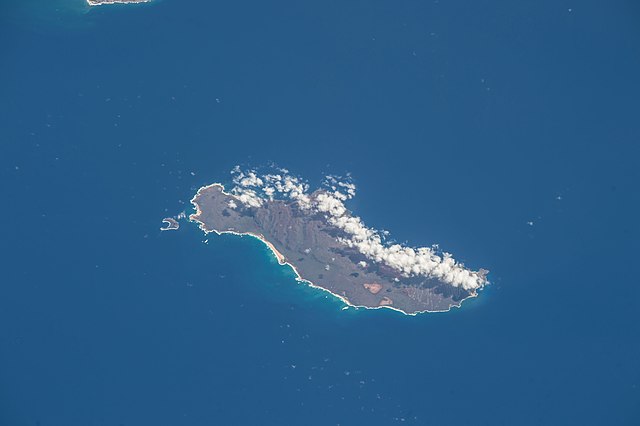No alarm clock. No traffic. No Starbucks. Just the crash of waves, the rustle of palm leaves, and the soft chant of a hula being practiced at dawn.
That’s not a fantasy. That’s Niʻihau.
You may have never heard of it. Most people haven’t. It’s a tiny speck in the Pacific, just 17 miles off the coast of Kauaʻi. But stepping onto Niʻihau is like stepping into a time warp, back to the 1800s, before statehood, before sugar barons, before Hawaii became a postcard.
No Wi-Fi. No Roads. No Tourists. No Joke.
This island is off-grid in every sense of the word. There are no paved roads. No plumbing. No phones. And definitely no Facebook or Instagram.
The roughly 70 or so permanent residents speak Hawaiian as their first language. Not in a “we teach it in school” kind of way. In a “this is how I talk to my mom and neighbors and ancestors” kind of way.
Cash isn’t really a thing. Most transportation is by horse. The only electricity comes from solar panels. And unless you’re invited by a resident or part of a very specific government or military crew, you’re not getting in. Period.
It’s been called the “Forbidden Island,” but that name sells it short. Niʻihau isn’t forbidden. It’s fiercely protected.
A Royal Promise That Still Holds
Back in 1864, a Scottish woman named Elizabeth Sinclair bought the island from King Kamehameha V for $10,000. That’s not the wildest part.
She promised the king she’d preserve the Hawaiian way of life on Niʻihau. Not a “we’ll try our best” kind of promise. A sacred, you-don’t-break-this kind of promise.
Her descendants, the Robinson family, still own the island today. And for over 160 years, they’ve kept that promise. Say what you will about private ownership of land (valid concerns!), but there’s something powerful about honoring a vow across seven generations.
Wait, How Does This Even Work?
Residents of Niʻihau live in one small village. They hunt, fish, farm, and trade with nearby islands. Some work part-time on Niʻihau Ranch or make crafts, like the prized Niʻihau shell leis, which can sell for thousands of dollars. The leis are intricate and beautiful, made from tiny shells found only on that island. They’re not just jewelry; they’re cultural artifacts.
There is a small school. Supplies come by boat or helicopter. Medical care? That’s…complicated. For serious issues, people go to Kauaʻi. But otherwise, community care is the name of the game.
No Netflix, Just Nature
The rhythm of life on Niʻihau is slow. Intentional. Quiet. Not in the trendy “mindfulness” way, but in the “we actually never left the old ways” kind of way.
It’s not utopia. Life is tough. Isolation can be hard. The economy is fragile. And not every native Hawaiian agrees with the way the island is run. But there’s a certain poetry in a place choosing to stay small, to resist the creep of commercialism.
Is It Romantic or Regressive?
To some, Niʻihau is a precious cultural sanctuary: a living museum, a place where the language and values of old Hawaiʻi breathe. To others, it’s a reminder of colonial power and the complexity of land ownership.
The truth, like most truths, is messy. And maybe that’s the point. Niʻihau isn’t meant to be a symbol. It just is.
It exists in its own quiet way. Off the grid. Off the map, really. And maybe that’s what makes it worth knowing.
The Takeaway
In a world that moves a thousand miles an hour, Niʻihau stands still. Not out of ignorance, but out of intention.
It forces us to ask: What parts of modern life are truly essential? And what have we lost in the name of progress?
You might never step foot on Niʻihau. But just knowing it exists, knowing there’s still a place where the past hasn’t been paved over.
Sources:
1. Beamer, Kamanamaikalani. No Mākou Ka Mana: Liberating the Nation. University of HawaiʻI Press, 2014.
2. Kanahele, George S. Ku Kanaka, Stand Tall: A Search for Hawaiian Values. University of HawaiʻI Press, 1992.
3. U.S. Census Bureau data on Niʻihau (via KauaʻI County)
4. Oral histories and interviews with Niʻihau residents collected in various cultural preservation projects.

